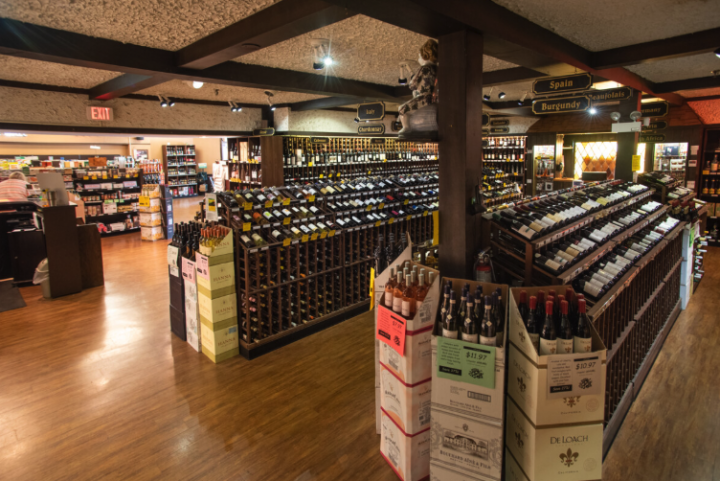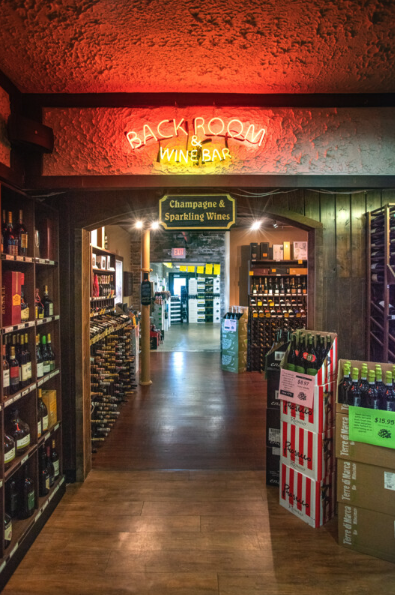
Twelve years ago, George Schaefer, Jr.—a 1986 Market Watch Leader and long-time president and co-owner of single-store retailer Schaefer’s Wines, Foods & Spirits in Skokie, Illinois—died at the age of 64 due to complications from leukemia. A year later, an investor named William Graham acquired the business and appeared ready to own and operate Schaefer’s for the long term.
But in January 2015, Graham was himself diagnosed with stage 4 leukemia. What followed was a treatment process that forced him to relinquish his role at Schaefer’s for a long period of time. He spent a month in the hospital, enduring 28 separate spinal taps and then three years of chemotherapy, the latter leaving his immune system so compromised that he couldn’t leave his house, let alone visit the store.
Having an owner-operator absent for three years certainly could spell doom for any business, but that wasn’t the case for Schaefer’s, which has endured plenty of trials and tribulations since its founding by George Schaefer, Sr. in 1936 at the same location where it stands today. Gene Schaefer Flynn, George Jr.’s sister, business partner, and fellow Market Watch Leader, retired after Graham purchased the store in 2009. But Graham persuaded George’s daughter, Anje Schaefer Cluxton, to stay on as executive vice president, overseeing much of the product ordering and other financial details. The majority of the old staff, many of them Schaefer’s veterans, remained on board, too, making the transition seamless for loyal customers.
Cluxton was on maternity leave when word came of Graham’s illness. She cut her leave short, came back to the same office once occupied by her father, and went straight to work, ensuring that the store didn’t miss a beat. In terms of profitability, the business is now healthier than ever before.
And Graham himself is healthy again too. A graduate of Williams College who received his MBA from Northwestern University, Graham made his fortune in 2005 when he and his brother sold the water and wastewater treatment product catalogue they’d founded to Home Depot. Today, he also serves as president of the Teton Regional Land Trust in Idaho, rounding up land easements, and volunteers with the nonprofit International Rural Water Organization in Nicaragua and Honduras, providing safe, chlorinated water to rural villages.

A Staff To Be Trusted
Some might’ve cashed out of a business like Schaefer’s when faced with such a devastating illness. But not Graham, a father of three who lives a few minutes from the store. “At no time have I thought about selling this business,” he stresses. “I knew I had a deep bench here who could carry on without me. This business is dependent on me from a financial standpoint, but otherwise doesn’t require my presence every day. It boils down to trust—and I have great trust in Anje and the people here.”
It’s an unusual situation in the greater Chicago market, which has suffered a recent rash of mom-and-pop wine shop closures amid constant expansion by big box rivals like Binny’s Beverage Depot (now up to 40 stores), Costco, and the Mariano’s grocery chain. Last year, the nearby Pantheon Wine Shoppe—which, like Schaefer’s, caters to a country club crowd on Chicago’s affluent North Shore—went dark as sales hit a downturn. And in 2018, Howard’s Wine Cellar on Chicago’s north side, owned by veteran retailer Howard Silverman, went out of business. The owners of both stores cited the difficulty in hiring knowledgeable and trustworthy staff as their greatest challenge.

Cluxton, like Graham, has an MBA and a commanding knowledge of finance. Like her father once did, she spends her days at a computer, analyzing sales data and managing the store’s finances. She has acquired the same house that she grew up in, a mile from the store, and lives there today with her husband and three children. After the death of her father and retirement of her aunt, she toyed with the idea of buying out the interests of other family members, but couldn’t raise the cash. She was prepared to move on when Graham implored her not to go. “Bill asked me to stay for a month or two to see how I liked it,” she says. “I did, and I liked the way things were going. After a while, the issue of my leaving never came up again.”
Cluxton has since been promoted to president, with Graham holding the title of owner. George Schaefer had a reputation as a conservative manager, and Cluxton, who has been working at the store since eighth grade, affirms that she’s cut from the same cloth. “The difference is that I work here five days a week, and he worked seven days a week,” she says. “I inherited his dedication to presenting retail with real service.”
With storage included, Schaefer’s spans about 8,000 square feet, located on a prime 1.5-acre corner lot that would probably be a McDonald’s or Walgreens by now if Graham hadn’t stepped in. Sales in 2019 were $5.5 million, flat with the year before and below the $9 million level the store reached during the peak years of the 1990s, when it hosted major wine dinners at local restaurants once or twice a month and staged in-store tastings where customers stood elbow to elbow. The store has more competition today, and millennials aren’t as wedded to high-touch shopping as their parents were.

The Wine Side
“Young people don’t collect wine like older generations once did,” says Mick Ter Haar, beverage director and a ten-year Schaefer’s veteran. Decades ago, Schaefer’s was a pioneer in offering futures in classified French wines and was a top choice for first growths. How much have things changed since then? “Today’s customers want $10 and $15 bottles of Bordeaux from us, and there are pretty good wines for that price now,” Ter Haar says. “People won’t come here anymore for $50 Bordeaux, though they have no problem spending $100 on a vintage Champagne. Outside of that, young people are focused on craft beer and whiskies.”
For such a small space, much of it given over to a high-end deli backed by a prep kitchen, Schaefer’s supports generous inventories—some 2,300 SKUs of wine, as well as 800 SKUs of spirits and 800 of beer. About 60% of overall sales are in wine, 16% in spirits, 12% in food, and 8% in beer, with another 4% devoted to items like glassware and party supplies. A few years ago, Schaefer’s got 3% of its volume from online sales, but has quit shipping in the past 18 months.

Unusually for such a small operation, Schaefer’s is an aggressive buyer of big case orders to qualify for special pricing. Cluxton recalls that her father would become nervous when any product was on the shelf too long. But Graham doesn’t monitor inventory turns so closely, if at all. “A 200-case buy doesn’t make Bill fearful,” Cluxton says. “It if takes 90 days to sell it all, Bill is fine with that. My dad was not fine with that—he wanted to see the inventory turning.”
Buying opportunistically is one way to fatten margins. Under George Schaefer, wine margins typically ran at around 33%-34% on a gross basis. The margins are now at 37%, the highest in memory, though spirits margins have fallen off to 18% and beer is at 26%.
Ter Haar explains that his French wine sales have been on a marked upswing, anchored by Sancerres like the 2017 Jean-Max Roger ($28 a 750-ml.), and such rosés as the 2018 Saint Aix from Provence ($18) and the 2017 Mont Gravet from Gascony ($7). Beyond that, he says that “half of the Chardonnay drinkers here are fed up with California styles. We’re turning them on to white Burgundies instead.” One example is the 2017 Thierry et Pascale Matrot Bourgogne, which is selling well at $25. For inexpensive Bordeaux, Ter Haar is recommending such labels as the 2015 Château Saint-Seurin de Léviac ($15). In Champagne, the 2009 Pol Roger Brut ($100) is a steady seller, and the Krug Grande Cuveé ($140) a bargain, though Veuve Clicquot Yellow Label ($55)—even at a price $10 above that of Binny’s—remains the category’s best seller.

Local Craft Beers
In beer, the highest-priced item is from Chicago-based Revolution Brewing—its Deep Wood series Deth’s Tar priced at $27 a 4-pack of 12-ounce cans. Beer buyer Eli Robinson delights in stocking obscure labels from local breweries. There’s the Orange Door IPA ($12 a 4-pack of 16-ounce cans), for instance, from Sketchbook Brewing Co. in nearby Evanston. Northwestern University’s campus is not far from Schaefer’s, and students and faculty are part of the store’s customer base, notes Robinson.
As for spirits, the most expensive is WhistlePig Boss Hog V: The Spirit of Mauve rye whiskey at $490 a 750-ml., while the single bestseller is Tito’s vodka ($19). “Their marketing is simply outstanding,” says Cluxton. In gin, emerging brands like local label F.E.W. ($30) and Sipsmith ($32) from London have overshadowed stalwarts like Beefeater ($20). The store orders its own Elijah Craig Bourbon direct from Heaven Hill Brands, offering it at $30. The big bargain may be Redemption Bourbon and rye, each priced at just $20. “We have to order quite a bit to qualify for that kind of pricing,” notes Cluxton.
The back wall of the store is notable for such rarities as the 2008 Gaja Sori San Lorenzo at $450 a 750-ml., and 1944 Château de Laubade Armagnac at $500. From California, there’s the 1996 Opus One at $330. Graham doesn’t profess to be a taster on par with some of the staff. “I’m not the best guy here to discuss the differences between 2015 and 2016 Bordeaux vintages,” he says. Still, the big decisions—like the search for a site for a second store or even an expansion on the current site—will need to be made soon. Back in health again, Graham relishes the challenges ahead.